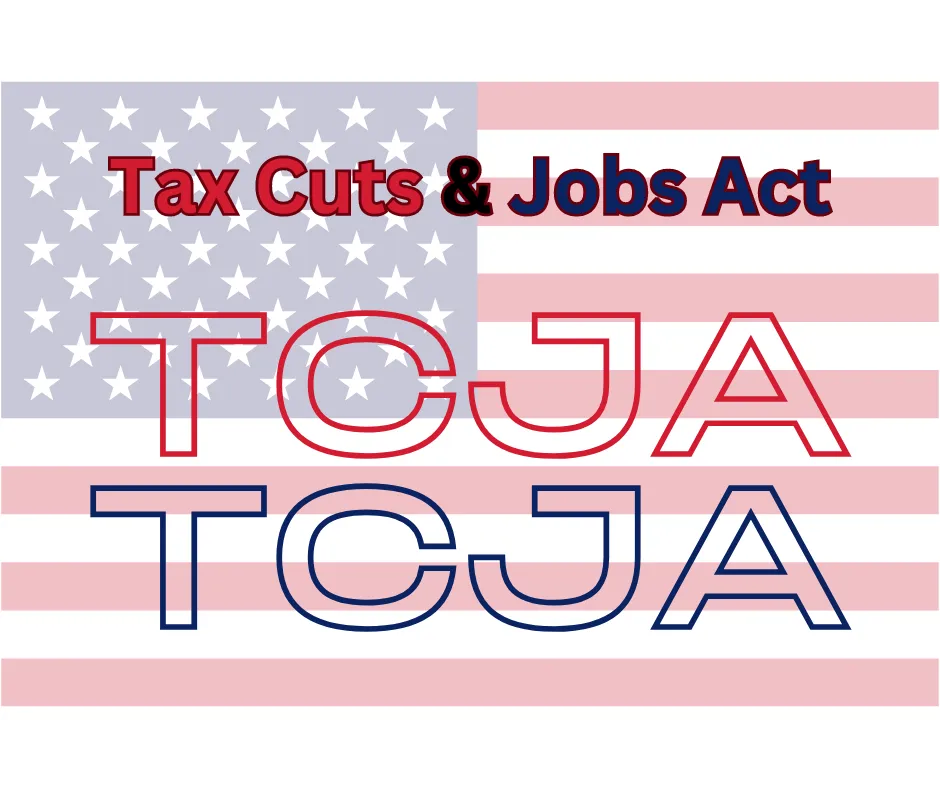Personal Finances &
Financial Literacy

Tax Cuts & Job Act
“In this world nothing is certain but death and taxes.” - Benjamin Franklin
Trump tax law:
Tax Cuts and Jobs Act (TCJA), which was introduced and signed into law by President Donald Trump on December 22, 2017. The TCJA is a comprehensive tax reform bill that made significant changes to the U.S. tax code.

Here are some key aspects of the TCJA
1. Individual Tax Rates
The TCJA reduced individual income tax rates for most taxpayers. It maintained seven tax brackets but lowered the rates and adjusted the income thresholds.
2. Standard Deduction
The standard deduction was nearly doubled for all filing statuses. This change simplified the tax-filing process for many individuals and families.
3. Personal Exemptions
The TCJA eliminated personal exemptions, which taxpayers previously claimed for themselves, their spouses, and dependents.
4. Child Tax Credit
The Child Tax Credit was increased from $1,000 to $2,000 per qualifying child. Additionally, the income threshold for eligibility was raised, allowing more families to claim the credit.
5. Alternative Minimum Tax (AMT)
The TCJA retained the individual alternative minimum tax but increased the exemption amounts, which reduced the number of taxpayers subject to the AMT.
6. Corporate Tax Rate
One of the most notable changes was the reduction of the corporate tax rate from 35% to 21%. This change aimed to make U.S. businesses more competitive globally.
7. Pass-Through Business Deduction
The TCJA introduced a new deduction for certain pass-through businesses, such as partnerships, S corporations, and sole proprietorships. This deduction allows qualifying businesses to deduct up to 20% of their qualified business income.
8. Estate Tax
The estate tax exemption was doubled, resulting in fewer estates being subject to federal estate taxes.
These are just a few highlights of the Tax Cuts and Jobs Act. The legislation was one of the most significant overhauls of the U.S. tax code in decades and had widespread implications for individuals, families, and businesses across the country.
Potential Impact of TCJA Expiration in 2025: Reversion to Pre-TCJA Tax Policies and Its Effect on Standard Deductions and Individual Taxes
If the individual provisions of the Tax Cuts and Jobs Act (TCJA) (Trump tax law) were to expire in 2025, without any new legislation to extend them, several key changes would revert to their pre-TCJA levels. Here's how the expiration of certain provisions could impact standard deductions and taxes for individuals after 2025:
Standard Deduction: The TCJA nearly doubled the standard deduction for all filing statuses. If the law were to end and the standard deduction reverted to pre-TCJA levels, it would mean lower standard deductions for taxpayers. This could result in higher taxable income for those who rely on the standard deduction rather than itemizing deductions.
Tax Rates: The TCJA reduced tax rates for most taxpayers across all income levels. If the individual tax provisions of the TCJA were to expire, tax rates would return to their pre-TCJA levels. This would likely result in higher taxes for many individuals, as they would be subject to higher tax rates on their income.
Child Tax Credit: The TCJA increased the Child Tax Credit from $1,000 to $2,000 per qualifying child and made it available to more taxpayers by raising the income thresholds. If the TCJA expired, the Child Tax Credit would revert to its pre-TCJA amount and eligibility criteria. This could mean less tax relief for families with children.
Other Deductions and Credits: The expiration of the TCJA could also affect other deductions and credits, such as the state and local tax (SALT) deduction, mortgage interest deduction, and medical expense deduction. These deductions were modified under the TCJA, and if the law were to end, these deductions might revert to their previous forms.
Overall, if the individual provisions of the TCJA were to expire without any new legislation, many taxpayers could see an increase in their taxable income and, consequently, higher tax liabilities. However, it's important to note that the future of tax policy is uncertain and would depend on the actions of Congress and the prevailing political and economic conditions at the time.
